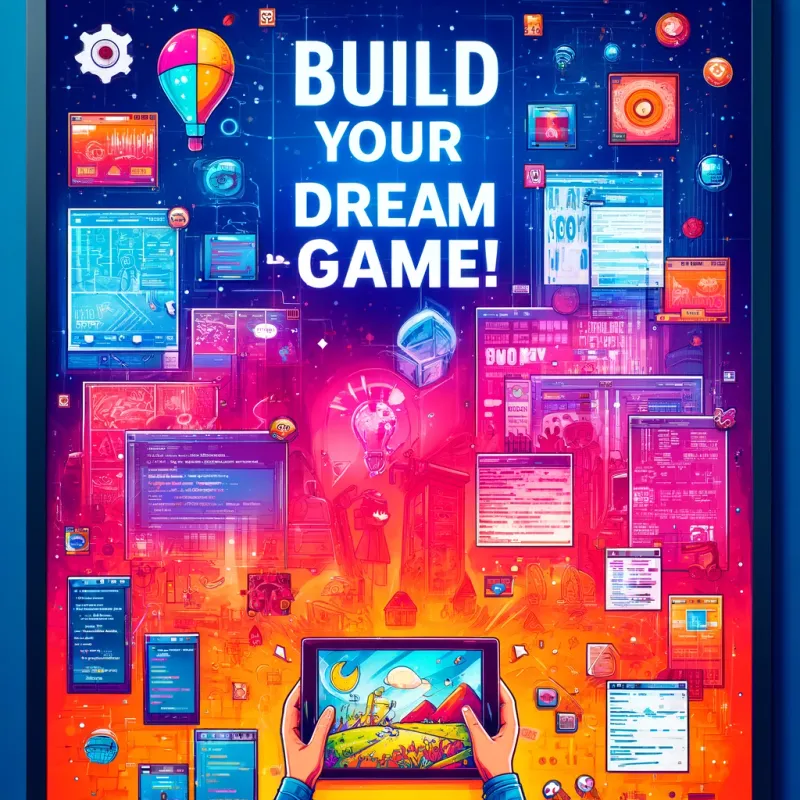What is LiveOps in Gaming? A Revolutionary Approach to Game Development

Introduction
In the high-octane gaming world, product managers and developers are constantly seeking ways to innovate and enhance the gaming experience. A significant game-changer in this field is LiveOps, a dynamic approach that has transformed how games are developed, updated, and monetized. In this article, we dive into the world of LiveOps, its benefits and its future potential!
What is LiveOps?
LiveOps, short for Live Operations, is a method that allows game developers to implement updates or changes into a game that's actively being played. It's like having a pit crew at a race that can tweak your car's performance while the race is still on, without pulling over for a complete overhaul. This approach is a game-changer as it allows Product Managers/developers to address bugs and glitches, and add enhancements in real time, eliminating the need to release entirely new versions of the game.
The primary aim of LiveOps is to consistently introduce improvements, contributing to player retention, increase engagement, and drive higher average revenue per paying user. All of this without having to release a new version of your game on the App Store/Play Store.
The Evolution of LiveOps
The concept of LiveOps wasn't always feasible. In the era of gaming consoles where games were bound to physical discs and cartridges, bug fixes and updates were a daunting challenge. However, with the transition to digital formats like apps, LiveOps has become the most viable option.
According to a report by Sensor Tower, games incorporating LiveOps generate revenue that is 30 times higher compared to those without it. It has now evolved beyond just addressing bugs and glitches to encompass customer-oriented services that enhance user experiences and facilitate game monetization. It allows for direct engagement, aids in user retention, and promotes in-app purchases, thus contributing to the profitability of the game.
The Benefits of LiveOps for Product Managers and Producers
LiveOps has become an indispensable tool in the arsenal of game developers, offering numerous benefits:
- Player Retention: LiveOps allows product managers to introduce enhancements throughout the game, whether it's with game assets, content, or offers, it combats stagnation and thereby improves player retention.
- Monetization Opportunities: LiveOps offers lucrative monetization avenues through in-app purchases, time-sensitive offers, and promotions, leading to high ad revenue or in-app purchases (IAP)
- Iterative Game Development: LiveOps enables PMs and developers to make timely modifications, ensuring ongoing enhancements and optimizations in the game experience.
- Community Building: LiveOps enables swift responses to player feedback and contributing to community building.
How is LiveOps used?

LiveOps is as versatile as a Swiss Army knife, offering multiple ways for users to return, engage, or re-engage with a game. Here are some of its key forms:
Introducing New Content: LiveOps allows for the seamless integration of new content created by game developers into the live game environment.
Time-sensitive Events: LiveOps can be used to announce time-limited offers or promotions, thus heightening user engagement, retention, and ad revenue.
In-app Purchase Bundles: LiveOps can be used to introduce bundles containing in-app purchases, rewards, and other items to entice users to make purchases.
A/B Testing Capabilities: Through A/B testing capabilities, LiveOps becomes a tool to refine and elevate a game's quality.
Choosing the Right LiveOps Tool

Selecting the right LiveOps tool is like choosing the perfect gaming console; it should seamlessly fit your needs and enhance your gaming experience. Here are some factors to consider:
Seamless Compatibility with Game Engine Technology Stack: The LiveOps tool should seamlessly integrate with the game engine and technology stack used in the game's development.
Appropriate Features and Capabilities: The LiveOps tool should have the necessary features like real-time content updates, analytics, in-game economy management, and engagement tools.
Simplified Integration: The LiveOps tool should offer straightforward integration with the game, be user-friendly for game developers, and provide well-documented APIs.
Robust Analytics Functionality: A LiveOps tool must have effective analytics features to facilitate data-driven decision-making.
Scalability and Performance: LiveOps tools must have the ability to accommodate a large number of players and implement upgrades without adversely affecting gameplay performance.
Integration with Diverse Monetization Solutions: Given the variety of ways product managers choose to monetize their apps, the LiveOps tool should seamlessly integrate with the chosen monetization solution of developers.
Here’s how Segwise can help!
Segwise optimizes LiveOps in gaming. From the above read, we now know live operations (Liveops) refers to the continuous updating and management of a game post-launch to keep players engaged and to drive monetization. But in every gaming studio or company, the data analyst will spend hours trying to identify suitable user segments for executing LiveOps changes, experiments and A/B tests. Additionally, they will also measure the impact of every LiveOps execution, which dictates the next experiment or remote config.
Here’s where Segwise comes in:
Identifying Suitable Segments Segwise can analyze player data to identify the most suitable segments to target for LiveOps. By understanding player behavior and preferences, game producers and product managers can tailor live events, promotions, and content updates to specific player segments, to improve player engagement, retention, and average revenue.
Automated Root Cause Analysis: Segwise's automated root cause analysis can help PMs quickly identify and address any issues affecting player experience or game performance during experiments and A/B tests. This can ensure that any disruptions or problems are promptly resolved, maintaining a positive player experience and preventing churn.
Identifying Growth Opportunities: By leveraging Segwise, your game analytics data is being consolidated and monitored automatically on a daily basis. Which means, Segwise will always be on the look out for player patterns and segments that are outperforming others, for you to scale your LiveOps activities to improve player LTV.
Highlighting Broken Funnels: Given the dynamic nature of LiveOps, sometimes things can break! Segwise steps in to quickly identify broken funnels within the game, such as drop-off points in the player journey or conversion bottlenecks or other such mishapenings. Addressing these issues through targeted LiveOps initiatives can yet again improve player retention, conversion rates, overall monetization or any metric you care about.
Key Takeaways
In the dynamic landscape of gaming, recognizing the significance of LiveOps as a strategy is paramount for product managers and developers seeking to excel, engage players, and optimize average revenue per paying user. The future of gaming rests in the hands of those adept at seamlessly integrating LiveOps into their game retention and monetization strategies. In addition, Segwise's observability and analysis capabilities can empower you to optimize LiveOps strategies by identifying suitable player segments, automating RCAs, and uncovering growth opportunities, for improved player engagement and business success.
So, whether you're a seasoned game developer looking to up your game or a newbie venturing into world of gaming, embracing LiveOps in combination with Segwise can be your secret weapon to create immersive, engaging, and profitable games.
After all, the gaming arena is not just about creating games; it's about creating experiences!


Comments
Your comment has been submitted successfully!